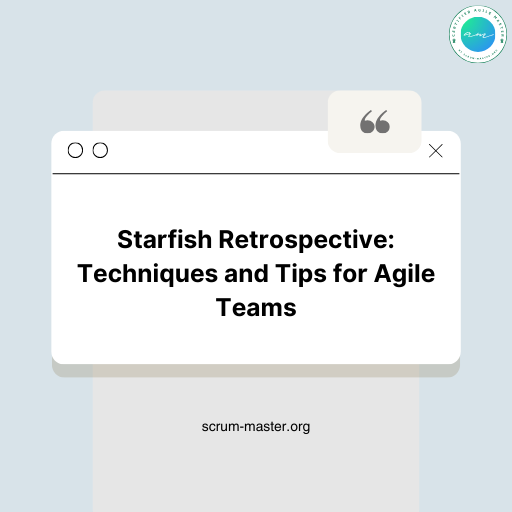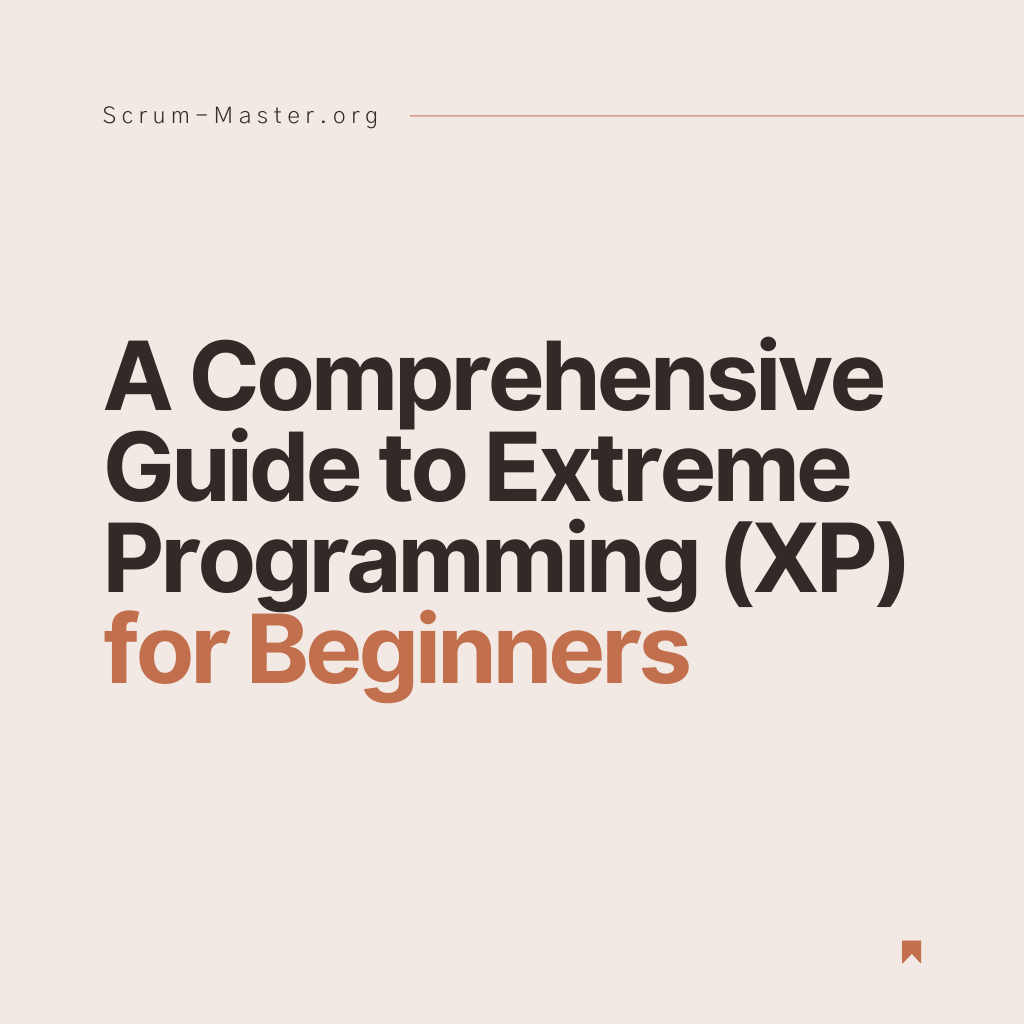Discover the Merrill & Covey matrix, also known as the emergency-importance matrix or the Eisenhower matrix. This prioritization, time management strategy, and productivity tool empowers Agile teams to effectively organize backlog elements such as tasks, User Stories, or Epics. By assessing each item’s urgency and importance, teams can navigate their to-do lists more efficiently, ensuring that critical tasks are addressed promptly while also planning for strategic goals.
In this exploration, we’ll delve into the merits and limitations of employing the Merrill & Covey matrix within Agile frameworks. We’ll compare this method against other prioritization techniques like the MOSCOW method, highlighting the distinctive benefits it offers. The implementation of this matrix by key roles, such as the Scrum Master and Product Owner, is pivotal in enhancing team productivity and managing workload.
Furthermore, we’ll illustrate how the matrix can be integrated into project management tools, including Jira, and offer reading recommendations for those keen to expand their knowledge on Agile, Lean, and effective prioritization methods.
Index
- 1 What is the Merrill and Covey Matrix?
- 2 How to Implement the Urgency-Importance Matrix in an Agile Team
- 3 Comparison between the Eisenhower Matrix and the MoSCoW Technique
- 4 How to set up the urgency-importance matrix on Jira or Miro?
- 5 Training: The ultimate guide to agility (Scrum / Kanban / Lean) and preparation for PSM / CSM / SAFe certifications
- 6 Additional Resources
- 7 Sources :
What is the Merrill and Covey Matrix?
Originating from the principles of former President of the United States Dwight D. Eisenhower and popularized in Stephen Covey’s “The 7 Habits of Highly Effective People,” the Merrill & Covey matrix stands as a cornerstone time management matrix. This tool aids in categorizing tasks based on their importance and urgency, facilitating a more structured approach to task prioritization.
The matrix divides tasks into four quadrants:
- Urgent and important: Tasks that demand immediate attention and carry significant consequences if delayed.
- Important but not urgent: Strategic tasks that, while not requiring immediate action, are vital for long-term success.
- Urgent but not important: Often interruptions that may seem pressing but do not contribute to long-term objectives.
- Not urgent and not important: Activities that offer little to no value and should be minimized or eliminated.
By applying this matrix, individuals and teams gain clarity on where to focus their efforts, enabling them to manage their time more effectively and avoid being overwhelmed by urgent matters. This strategic approach ensures that tasks align with broader goals, moving beyond mere deadline-driven to-do lists to a more nuanced understanding of task prioritization.

How to Implement the Urgency-Importance Matrix in an Agile Team
Implementing the Merrill & Covey matrix in an Agile environment streamlines the prioritization of backlog items, from SAFe Epics to User Stories and Tasks. This process involves the entire team to foster a shared understanding of what tasks require immediate focus versus those that are important but can be scheduled for later. Here’s a guide to integrating this matrix within your Agile team:
Engage All Team Members: It’s crucial for every team member to grasp the matrix’s utility in enhancing time management and prioritization. A collective understanding aids in its effective application.
Compile a Comprehensive Task List: Gather all ongoing and upcoming tasks, categorizing them by their urgency and importance. This step is foundational in preparing for the matrix’s application.
Categorize Tasks within the Matrix: Assign tasks to the appropriate quadrants of the matrix. This visual categorization helps in distinguishing between what needs immediate action and what can be planned for future sprints.
Identify Priority Tasks: Focus on Quadrant 1 tasks—those that are both urgent and important—to determine which items should be tackled first to prevent potential crises.
Plan for Quadrant 2 Tasks: By planning tasks that are important but not urgent, you can proactively address significant objectives without the pressure of looming deadlines, thus avoiding future urgencies.
Minimize or Eliminate Quadrants 3 and 4: Identifying tasks that are less critical or irrelevant can free up valuable time and resources, allowing the team to concentrate on more impactful activities.
Regularly Review the Matrix: The dynamic nature of Agile projects necessitates frequent revisits to the matrix to ensure alignment with evolving priorities and objectives.
The roles of the Scrum Master and Product Owner are instrumental in guiding the team’s use of the Merrill & Covey matrix. While the Scrum Master facilitates the matrix’s integration into daily workflows, the Product Owner ensures that it aligns with the product’s strategic vision.

Comparison between the Eisenhower Matrix and the MoSCoW Technique
When it comes to backlog prioritization within Agile frameworks, both the Eisenhower (or Merrill & Covey) matrix and the MoSCoW technique offer valuable, yet distinct, approaches. Understanding their differences and applications can significantly enhance a team’s prioritization efforts:
Focus of Prioritization: The Merrill & Covey matrix emphasizes tasks based on their urgency and importance, facilitating a balance between immediate needs and long-term goals. Conversely, the MoSCoW technique prioritizes based on necessity, distinguishing between what must, should, could, and will not be done, focusing primarily on the importance of tasks without the urgency factor.
Application to Backlog Items: The Merrill & Covey matrix is particularly effective for sorting individual tasks, helping to manage daily activities and time wasters. The MoSCoW technique, on the other hand, is often applied to broader project features or requirements, making it suitable for strategic project planning.
Integration in Agile Teams: While both methods are compatible with Agile methodologies, the MoSCoW technique is frequently utilized in Scrum teams for its straightforward approach to feature and project prioritization.
For Agile teams, combining these techniques based on the project’s specific needs can offer the best of both worlds. The Merrill & Covey matrix can guide the prioritization of technical tasks and time management, while the MoSCoW technique can structure the prioritization of User Stories or Epics. For more insights, consider exploring our article on the MoSCoW prioritization technique.
How to set up the urgency-importance matrix on Jira or Miro?
Integrating the Eisenhower Matrix, also known as the Merrill & Covey Matrix, into project management tools like Jira and Miro significantly enhances Agile teams’ backlog management capabilities. The choice between these platforms should align with the team’s specific needs for task visualization and prioritization.
Integrating the Eisenhower Matrix in Jira and Miro
While Jira is renowned for its comprehensive project management features, it does not offer a built-in Eisenhower Matrix. However, the platform’s flexibility allows for the use of plugins such as “Priority Matrix”, which facilitates the creation of custom matrices for task prioritization. This integration enables teams to manage tasks according to their urgency and importance, directly aligning with the project’s broader objectives.
For a more visually intuitive and collaborative approach, Miro emerges as an exceptional alternative. The platform’s interactive whiteboard feature is perfectly suited for applying the Eisenhower Matrix, offering a dynamic and engaging method for categorizing and prioritizing tasks. Teams are encouraged to explore this valuable Miro free template, specifically designed for the Eisenhower Matrix, to streamline their prioritization process effectively.
Other tools, such as Taskworld and Quire, provide further alternatives for incorporating priority matrices within Jira, accommodating a variety of team preferences and project requirements. These options, along with the Miro template, enhance flexibility in task management strategies.
Choosing the Appropriate Tool for Eisenhower Matrix Implementation
Deciding whether to use Jira or Miro for implementing the Eisenhower Matrix hinges on factors like the team’s familiarity with the tools, integration needs with existing workflows, and the preference for a visual or traditional task management approach. Jira offers a robust solution for teams looking to integrate the Eisenhower Matrix into their existing project management framework, especially through the use of plugins. Conversely, Miro provides an advantageous platform for teams valuing ease of use, collaboration, and visual planning.
Irrespective of the chosen tool, the primary objective is to leverage the Eisenhower Matrix effectively to enhance prioritization, productivity, and time management within Agile teams. By utilizing the strengths of Jira or Miro, teams can ensure a balanced approach to handling tasks of varying urgency and importance, thereby driving project success and maintaining focus on impactful activities.
Additional Resources
For Agile practitioners eager to deepen their understanding of prioritization techniques and Agile methodologies, the following resources are invaluable. They offer a wealth of knowledge on enhancing team productivity, mastering Agile frameworks, and applying effective prioritization strategies:
Our Article on the WSJF Prioritization Method: Discover a prioritization tool widely embraced in SAFe environments, offering insights into balancing task urgency with value delivery.
The Lean Startup by Eric Ries: This seminal book introduces the Lean Startup approach, emphasizing rapid iteration, customer feedback, and the strategic use of the Merrill & Covey matrix for task prioritization within Agile and Lean contexts.
Agile Estimating and Planning by Mike Cohn: A comprehensive guide to Agile planning that covers a range of estimating techniques, including the application of the Merrill & Covey matrix for effective sprint planning.
The 7 Habits of Highly Effective People by Stephen R. Covey: Delve into the habits that foster personal and professional effectiveness, including insights on prioritization and time management that underscore the importance of the Merrill & Covey matrix.
Scrum: The Art of Doing Twice the Work in Half the Time by Jeff Sutherland: Explore the foundations of Scrum, offering practical advice on implementing Agile practices like the Merrill & Covey matrix to enhance productivity and deliver value more efficiently.
Our Article on the RICE Method: Learn about the RICE scoring system, which provides a framework for assigning precise priority levels to each backlog item, complementing the Merrill & Covey matrix’s approach.
These resources are curated to support your journey in Agile project management, offering strategies for prioritizing work effectively and driving project success. Whether you’re new to Agile or looking to refine your existing practices, these readings and tools provide a solid foundation for mastering prioritization within Agile and Scrum frameworks.
Sources :
- Luke Hohmann’s WikiAgile article (in French).
- The article Covey’s Matrix: the simple secret to great time management on Bytestart.










